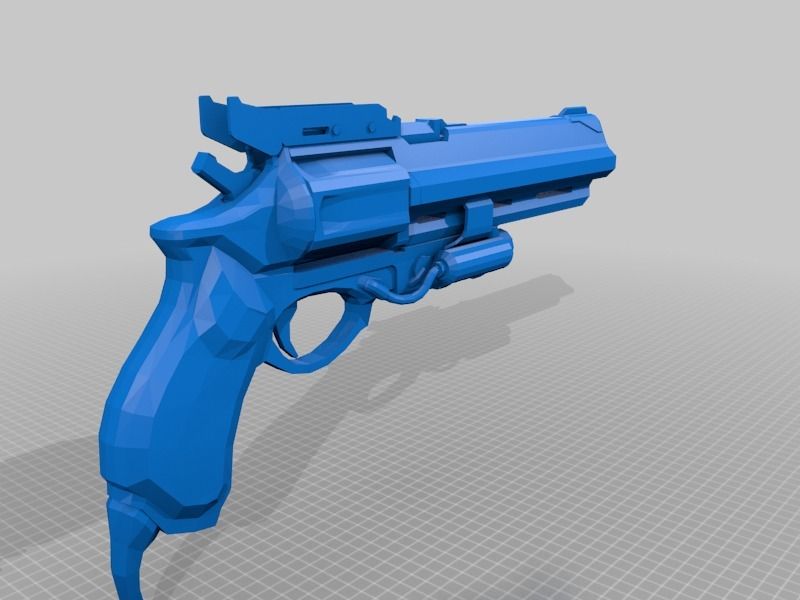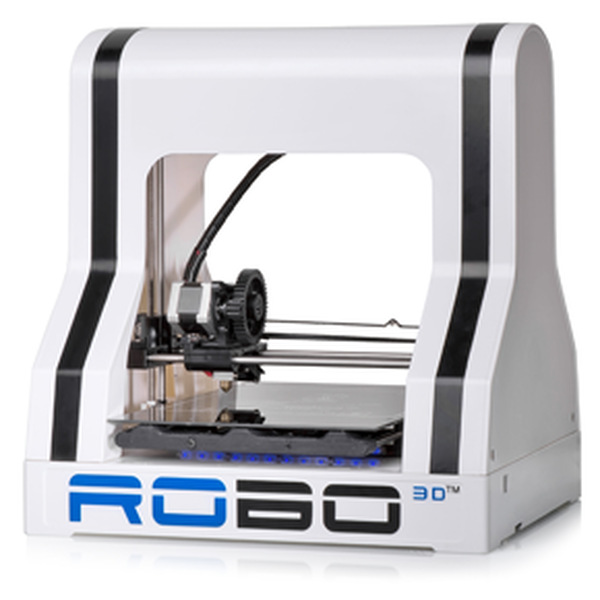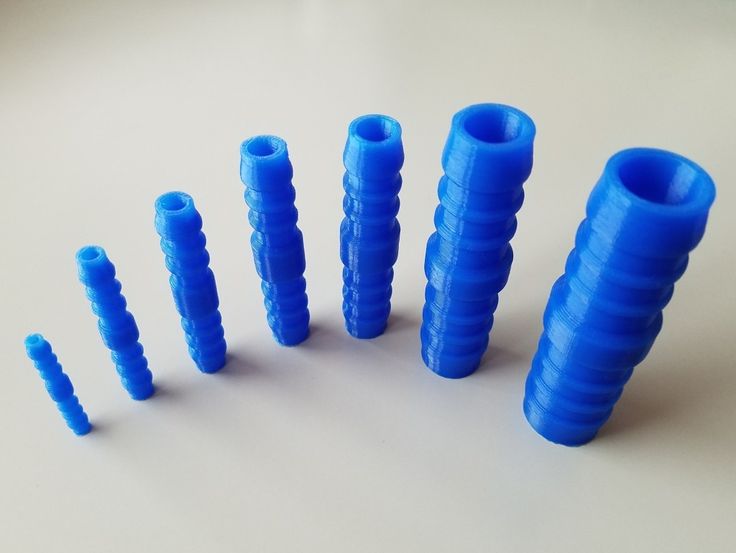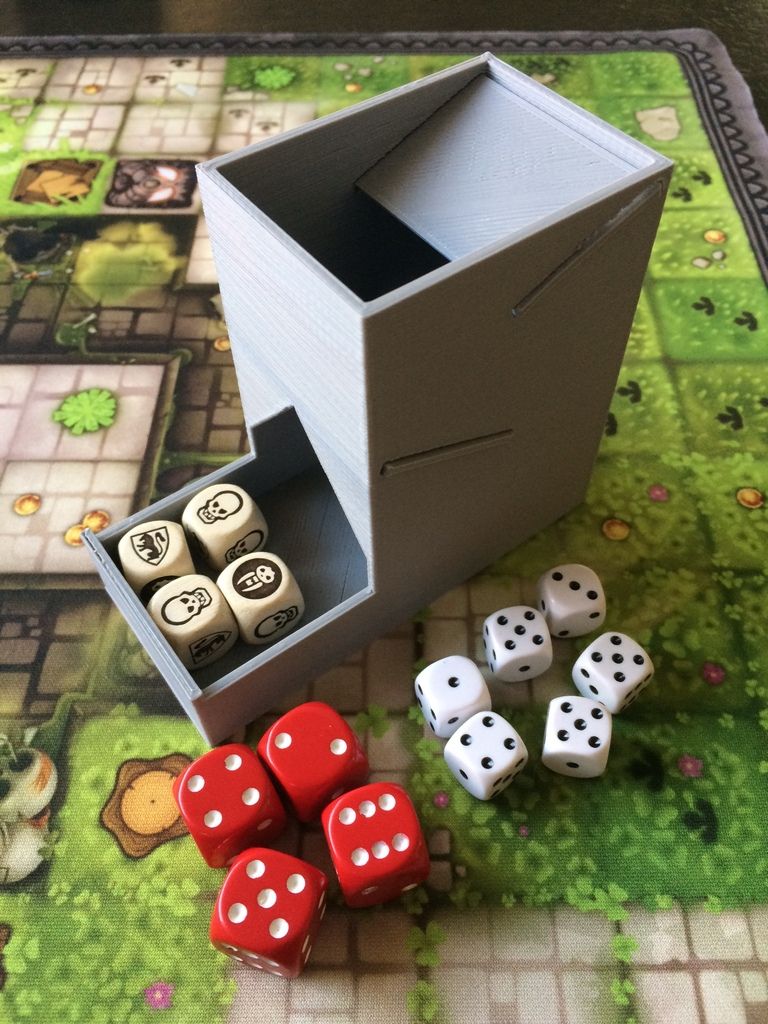Metallic filament 3d printer
Ultimate Materials Guide - 3D Printing with Metal Filament
Overview
Metal filled filaments contain very fine metal powder such as Copper, Bronze, Brass, and Stainless Steel. The percentage of metal powder infused in each filament can vary depending on the manufacturer. The presence of this metal powder makes the filament much heavier than standard plastics. This means that the parts printed with metal-filled PLA will weigh significantly more than ones from the standard PLA, despite using the same settings and consuming the same amount of material. Metal filled filaments also tend to be very abrasive as they are extruded through the hotend. A standard brass nozzle will be too soft and will quickly wear down. Be sure to upgrade to a wear resistant nozzle in order to print this filament effectively. There are other metal-like filaments in the market that may just have metallic coloring added to the filament. These filaments do not contain any actual metal powder, so they do not share many of the same benefits of the true metallic filaments. This article will focus on materials that contain actual metal powders for a realistic metallic weight and feel.
- Metallic finish is aesthetically appealing
- Does not need high-temperature extruder
- Heavier than standard filaments
- Requires a wear-resistant nozzle
- Printed parts are very brittle
- Very poor bridging and overhangs
- Can cause partial clogs over time
- Expensive
Hardware Requirements
Before 3D printing with metal filled filament make sure your 3D printer meets the hardware requirements listed below to ensure the best print quality.
Bed
Temperature: 45-60 °C
Heated Bed Optional
Enclosure Not Required
Build Surface
Painter’s Tape
Glue Stick
PEI
Extruder
Temperature: 190-220 °C
Requires Wear Resistant Hardened Steel Nozzle
Cooling
Part Cooling Fan Required
Best Practices
These tips will help you reduce the chances of common 3D printing issues associated with metal filled filaments such as clogging, the nozzle wearing down, poor bridging, and blobs left on the surface of the print.
Use Wear-Resistant Nozzles
Most 3D printers ship with brass nozzles that are relatively soft. Since metals can be abrasive in general, brass nozzles can easily wear out when used with metal filled filaments. Upgrading to a wear-resistant nozzle will help reduce the wear significantly. Another aspect to consider while upgrading is the nozzle size. Although it is possible to print with standard 0.4mm nozzles, metal particles tend to clump around the orifice and can cause clogging over extended periods of use. Nozzle sizes of 0.5 – 0.6 mm seem to work better for metal filled filaments. It is also good to periodically check the nozzle orifice for any visible wear. Worn out nozzles can otherwise result in inconsistent extrusion and reduced overall quality of the printed parts.
Be Aware of Bridging Limitations
Metal filled filaments are quite heavy, which has an impact on their bridging performance. When the molten plastic is extruded across either side of the bridge, it droops excessively and eventually breaks before it can complete the bridge. This means that parts with lots of large bridging regions will be very difficult to print.
This means that parts with lots of large bridging regions will be very difficult to print.
Simplify3D Version 4.0 added several new features related to bridging, including one that allows you to completely customize the direction of this bridging fill. If you have a part that requires bridging and there is no way to avoid it, you might find that there is a specific fill angle that will work best for this material. The software also allows you to customize the exact speed and extrusion rate used for the bridges, so you can experiment to find what works best for your material. Other successful methods would be to add support structures to support any potential overhangs, or consider using a dual extrusion system with a dissolvable support structure such as PVA. Simplify3D includes a feature called Dense Supports, which allows you to use this PVA material very sparingly, only at the interface between the supports and the part, so this can be a great option as well.
Check the Filament Path for Sharp Bends
Metal filaments are very brittle in general.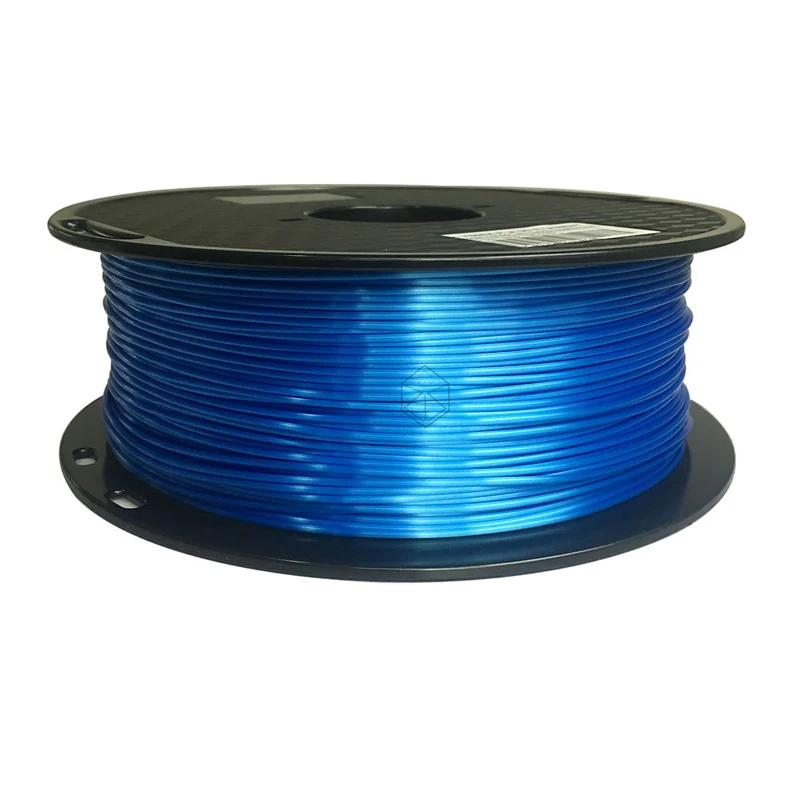 This affects the final parts, but it also applies to the raw filament itself which needs to be pulled into the printer as it is extruded. If you follow the filament path from the spool, all the way to the extruder, check for any sharp angles or curves which may put too much stress on the filament. We found that many printers included sharp bends that had a tendency to cause the filament to snap in the middle of printing. You may notice this happens more as the toolhead moves around during the print, since different toolhead positions may put more stress on the filament as it bends to move to the new location. One great way to avoid this is the change the location where the filament spool is mounted. Start by mounting the spool on top of the printer and try to minimize the distance from the spool to the extruder.
This affects the final parts, but it also applies to the raw filament itself which needs to be pulled into the printer as it is extruded. If you follow the filament path from the spool, all the way to the extruder, check for any sharp angles or curves which may put too much stress on the filament. We found that many printers included sharp bends that had a tendency to cause the filament to snap in the middle of printing. You may notice this happens more as the toolhead moves around during the print, since different toolhead positions may put more stress on the filament as it bends to move to the new location. One great way to avoid this is the change the location where the filament spool is mounted. Start by mounting the spool on top of the printer and try to minimize the distance from the spool to the extruder.
Additionally, a strong filament guide tube that limits the bend in the filament path will prevent most breakages.
Tune Your Retraction Settings
Like wood filled and other composites materials, retractions with metal filled filaments can be rather challenging.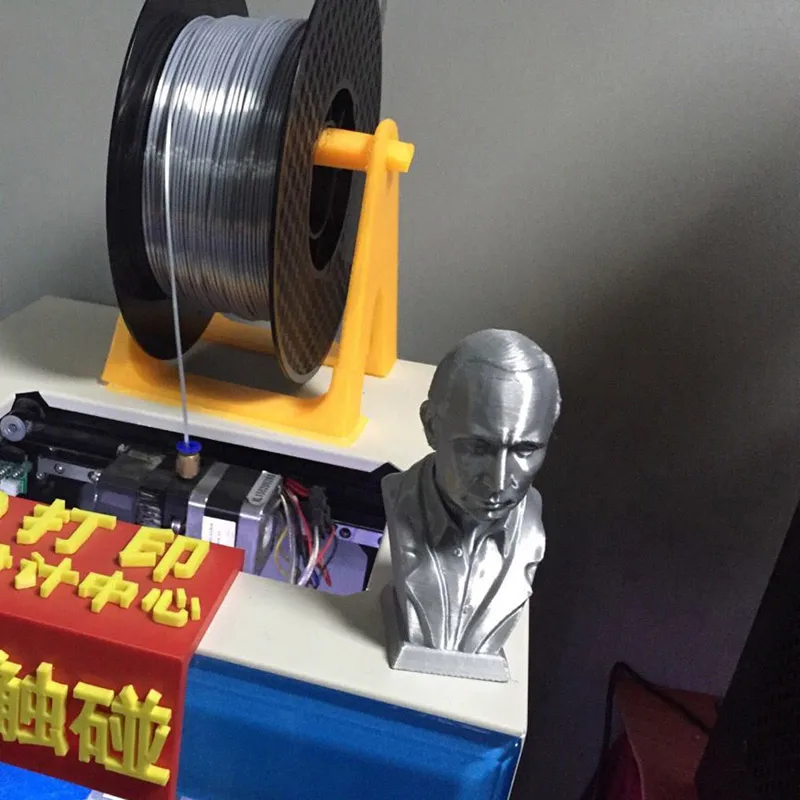 The presence of metal powder makes it difficult for the nozzle to contain the suction pressure in the melt chamber during retraction. This will frequently lead to blobs at the beginning and end of each printed segment, where the extruder was trying to start or stop the plastic extrusion. Simplify3D has several features that can be a big help in this situation. The first is a unique feature called Coasting, which will automatically reduce the pressure in the nozzle right before the end of a print segment. This greatly reduces oozing when moving to the next print segment, so it can be a great option to consider. You can also try setting the “extra restart distance” to a negative value of -0.1 or -0.2mm, as this can help with the blobs that may form at the start of each segment. For more tips on how to reduce these blobs, please refer to our Print Quality Guide: How to Reduce Blobs and Zits.
The presence of metal powder makes it difficult for the nozzle to contain the suction pressure in the melt chamber during retraction. This will frequently lead to blobs at the beginning and end of each printed segment, where the extruder was trying to start or stop the plastic extrusion. Simplify3D has several features that can be a big help in this situation. The first is a unique feature called Coasting, which will automatically reduce the pressure in the nozzle right before the end of a print segment. This greatly reduces oozing when moving to the next print segment, so it can be a great option to consider. You can also try setting the “extra restart distance” to a negative value of -0.1 or -0.2mm, as this can help with the blobs that may form at the start of each segment. For more tips on how to reduce these blobs, please refer to our Print Quality Guide: How to Reduce Blobs and Zits.
Pro-Tips
- To prevent the chances of clogging, you can greatly reduce the number of retractions in Simplify3D by enabling the “Only retract when crossing open spaces” option or disabling “Force retraction between layers”.
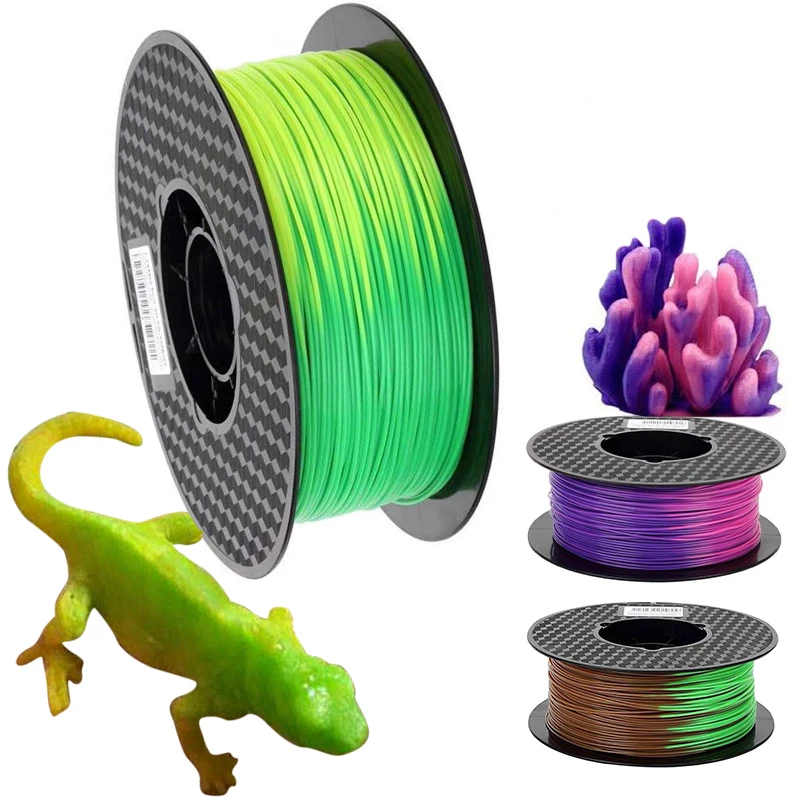 Both of these settings can be found on the Advanced tab of your process settings.
Both of these settings can be found on the Advanced tab of your process settings. - Due to the heavy nature of this material, metal filled filaments typically do quite poorly when printing overhangs or bridges. To reduce the number of overhangs required for your print, try reducing the layer height to 0.1 or 0.15mm. This can significantly improve overhang performance.
Get Started with Metal Filled Filaments
There are many unique applications for these specialty filaments. We’ve put together a list of common applications, sample projects, and even popular brands of filament to help you get started.
Common Applications
- Sculptures and Busts
- Replicas for Museums
- Jewelry
Sample Projects
- Bull
- Minerva
- Anvil
- Nefertiti
Popular Brands
- ColorFabb Brassfill, Bronzefill, Steelfill, CopperFil
- Protopasta Composite PLA – Magnetic Iron, Polishable Stainless steel
- FormFutura MetalFil
3D Printing Metal Filaments and Powders
There are two main drivers of whether or not a metal alloy is printed today: printability and demand.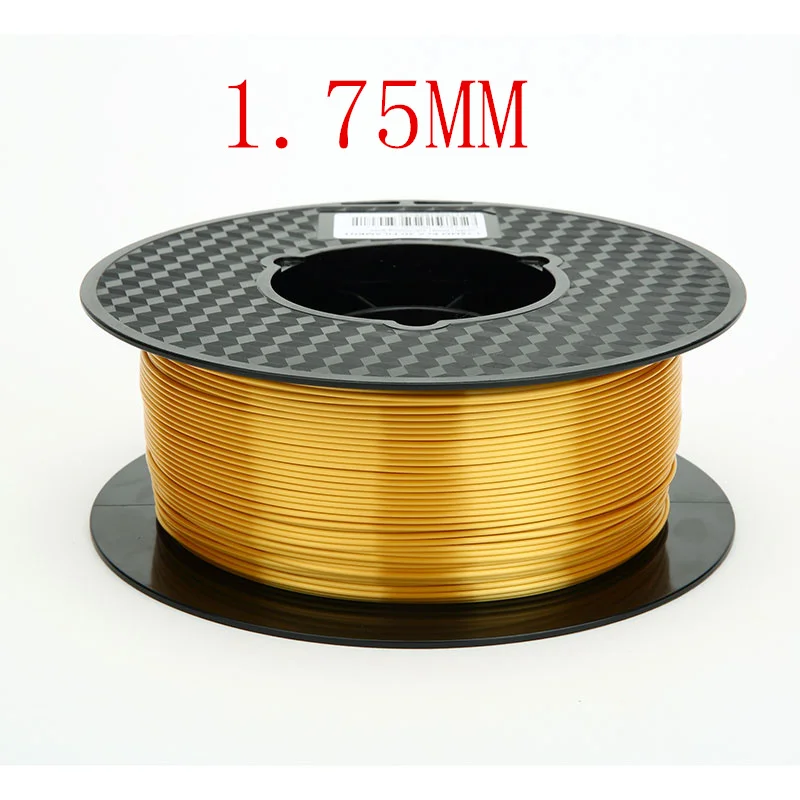 Though there are a wide variety of metal 3D printing processes out there, nearly all rely on metal powders. These materials take two forms in printing: raw 3D printing metal powders, or bound powder 3d printing metal filament. As a result, the metal materials printable today are to a large degree constrained by powder availability and whether or not that powder can be effectively bound. Aluminum, as an example, is notoriously difficult to print well and is as a result relatively uncommon.
Though there are a wide variety of metal 3D printing processes out there, nearly all rely on metal powders. These materials take two forms in printing: raw 3D printing metal powders, or bound powder 3d printing metal filament. As a result, the metal materials printable today are to a large degree constrained by powder availability and whether or not that powder can be effectively bound. Aluminum, as an example, is notoriously difficult to print well and is as a result relatively uncommon.
Metal 3D printing is useful for parts that are tricky to machine, either in complexity or material, because especially at low volumes it can be cheaper. Harder materials like stainless steels, tool steels, titanium, and others are more difficult to work with and require higher quality tooling, better machines, and more overhead costs. The added natural manufacturing costs adds to the relative value that 3D printing provides, allowing them to cross the "inflection point" at which 3DP becomes valuable. On the other side of the spectrum, materials that are easy and cheap to machine (low grade steel, aluminum), aren't as in demand because it's already easy to make them. This forms a grouping of "common" metal printing materials that are traditionally really hard to work with, made simple by additive instead of subtractive.
On the other side of the spectrum, materials that are easy and cheap to machine (low grade steel, aluminum), aren't as in demand because it's already easy to make them. This forms a grouping of "common" metal printing materials that are traditionally really hard to work with, made simple by additive instead of subtractive.
What are the most common metals for 3D Printing?
- Stainless Steels (17-4 PH, 316L, 304)
- Tool Steels (h23, A2, D2)
- Specialty Alloys (Inconel, Cobalt Chromium, and others)
- Titanium (Ti64)
- Aluminum (4047, 6061, 7075)
Steel 3D Printing
Steel is the most common metal 3D printing material. Its strength, ability to be turned into 3D printing metal powder, relatively low cost, and post-processability make it a material usable in many applications. Most varieties of steel can be printed: the two most common are stainless steels and tool steels. Not all steels are commonly printed -- Alloy steels, which are the most common to fabricate conventionally, are rarely printed. Due to their lower conventional fabrication costs and inferior material properties, they’re not as valuable of a material to print.
Due to their lower conventional fabrication costs and inferior material properties, they’re not as valuable of a material to print.
Stainless Steels
Stainless steels are strong, stiff steels that possess excellent corrosion resistance due to their significant Chromium content (at least 12%, often up to 18%). They come in two different varieties, austenitic and martensitic.
A stainless steel lattice, printed with a Selective Laser Melting printer. Image from Axom.Austenitic stainless steels are the most common type of stainless steel. They’re corrosion resistant and can be both machined and welded, though they cannot be heat treated. 303 and 304 are the most common types of austenitic stainless steels, and 316L is a variant that maximizes corrosion resistance.
Martensitic stainless steels are much harder than austenitic steels, but more brittle and less corrosion resistant. As a group, they lack the general versatility of austenitic steels -- however, they can be heat treated and precipitation hardened. They’re best when you need a hard and stiff stainless steel. 17-4 PH is a particularly useful type of martensitic stainless steel that can be heat treated to fit a variety of material properties -- it’s also the most common martensitic steel, though others (like 420) are also printed.
They’re best when you need a hard and stiff stainless steel. 17-4 PH is a particularly useful type of martensitic stainless steel that can be heat treated to fit a variety of material properties -- it’s also the most common martensitic steel, though others (like 420) are also printed.
Tool Steels
Tool Steels are named for their central application -- tooling of all varieties. They contain carbide, an extremely hard compound that’s critical to their ability to cut, grind, stamp, mold, or form. Generally, they’re very hard, abrasion resistant, and usable at high temperatures. Tool steels are categorized by the AISI-SAE grading systems, divided into types by function. The three types most commonly metal 3D printed are A series, D series, and H series tool steels.
Tools steels are often uses for stamping, pressing, and other metal forming applications. Image from ultrastamping.A Series tool steels are great general-use tool steels -- they balance wear resistance and toughness and are machinable. There are eight varieties of A Series tool steels, the most common of which is A2. It’s a versatile tool steel often used to make punches and dies, but usable in a wide variety of applications.
There are eight varieties of A Series tool steels, the most common of which is A2. It’s a versatile tool steel often used to make punches and dies, but usable in a wide variety of applications.
D Series tool steels are optimized for wear resistance and hardness. They’re not particularly tough, and only used for cold work applications. The most common variety of D Series tool steel is D2 -- it’s used for all kinds of cutting tools, from blades to industrial cutting tools and even knives.
H Series tool steels cut and shape material at high (or cycling) temperatures. They’re not as wear resistant as A or D Series tool steels at low temperatures, but hold their strength and stiffness well in increased heat. Though there are many types of H-Series tool steel, h23 the most common 3D printed variety. Its mix of excellent toughness, wear resistance, and heat resistance make it a good general use tool steel that’s optimized for use in high temperatures (hot working).
Titanium 3D Printing
While Titanium is by no means a common material to fabricate conventionally, its unique properties and high base cost make it a great candidate for 3D printing. It’s strong, incredibly lightweight, heat and chemical resistant, and can be biocompatible. Though there are a few different types of Titanium that can be printed, one is by far the most common: Titanium 64 (Ti-6Al-4V).
A custom titanium bike part 3D printed with an SLM machine. Image from Spencer WrightTi64 is the most common type of Titanium in both 3D printing and conventional fabrication. It possesses an excellent strength to weight ratio and can be heat treated to further improve strength. The material also excels in adverse environments due to its corrosion and heat resistance. As a result, it’s used heavily in aircraft (missiles, rockets, airplanes) medicine (as orthopedic implants) and other places where high strength to weight ratio is beneficial.
Aluminum 3D Printing
Aluminum is notoriously difficult to print. As a result, it’s a relatively uncommon printing material despite being exceedingly common in conventional fabrication. The varieties that are printed are generally casting grade aluminum, not more common machinable types like 6061 or 7075. These casting grade aluminum alloys all contain significant (up to 12%) Silicon content, and are weaker and less stiff than 6061. It’s not immediately clear when Aluminum will become more readily available as a 3D printing material, but until then materials like steel and titanium achieve similar strength to weight ratios when printed with open cell infill.
As a result, it’s a relatively uncommon printing material despite being exceedingly common in conventional fabrication. The varieties that are printed are generally casting grade aluminum, not more common machinable types like 6061 or 7075. These casting grade aluminum alloys all contain significant (up to 12%) Silicon content, and are weaker and less stiff than 6061. It’s not immediately clear when Aluminum will become more readily available as a 3D printing material, but until then materials like steel and titanium achieve similar strength to weight ratios when printed with open cell infill.
Specialty Alloys
In addition to more common metals, 3D printers can also fabricate parts out of alloys uniquely suited for hostile environments. These “superalloys” -- metals that exhibit high strength, heat resistance, good surface stability, and resistance to corrosion or oxidation -- can be used in a wide variety of high performance applications. Two subgroups are most common: Inconel and Cobalt Chrome.
Inconel
Inconel is the most common and best known proprietary nickel alloy. It’s an extremely strong, stiff, and corrosion resistant material used in places like turbines, engine seals, and rockets. There are two main formulations that are 3D printed: Inconel 718 is stronger and tougher, and Inconel 625 is more heat resistant. Both materials are incredibly expensive to machine conventionally, making 3D printing a cost-effective alternative to fabricating high fidelity parts.
Cobalt Chrome
Cobalt Chromium is a superalloy known for its biocompatibility, high strength to weight ratio, and corrosion resistance -- it’s essentially a higher-grade, more expensive version of Titanium. Like Inconel, it’s used in turbines and other hostile environments. Unlike Inconel, it can be used in medical applications as orthopedic or dental implants.
Looking Forward
The long term success of metal printers hinges to a large degree on their ability to support a wide variety of materials reliably. The current list is short and focused on higher grade materials that are financially beneficial to fabricate now. However, as metal 3D printing matures, expect to see more and cheaper metal 3D printing filaments and powders available across different metal printing platforms. These materials in turn will open up new applications for metal printing, furthering its adoption by the manufacturing masses.
The current list is short and focused on higher grade materials that are financially beneficial to fabricate now. However, as metal 3D printing matures, expect to see more and cheaper metal 3D printing filaments and powders available across different metal printing platforms. These materials in turn will open up new applications for metal printing, furthering its adoption by the manufacturing masses.
Steel 3D Printing - A Quick Guide / Sudo Null IT News
Any metal 3D printing technology can print with steel. This is the most popular material. But which steel grades and which technology is best for your application? Will printed steel parts really be as strong and durable as traditionally made parts?
Let's see how a 3D printed steel part is revolutionizing manufacturing and opening doors to new applications in aerospace, medical equipment, automotive, tool making, heavy industry, architecture and more. In addition, more affordable desktop printers are expanding the scope and scope of real steel 3D printed parts.
Strength of steel printed parts.
Cast steel part (left), 3D printed version (center). On the right, a fully 3D printed hinge requires no assembly. (Source: Desktop Metal)The most common question when it comes to a 3D printed metal model is "Will it be as strong as a forged or cast part?" ?". The short answer is yes... and no.
3D printed steel parts can be just as strong, and sometimes even stronger, than those made in the traditional way. It depends on many factors such as: end use, type of steel, choice of 3D printing method, post-processing and shape of the part. Also, the comparison depends on which of the strength characteristics you focus on: tensile strength, static load strength, fatigue strength, etc.
Parts printed from steel are used in the aerospace industry, for the military, and also, for example, for the manufacture of a footbridge, shown below. Therefore, the strength of printed products is beyond doubt, but let's take a closer look.
A 3D printed or laser powder sintered (LPBF) steel part has a finer grain structure than cast metal products. This provides better tensile strength characteristics, but in other respects the cast parts are currently still stronger. Most often, LPBF 3D printing is used to replace cast components, but in some cases, 3D printed components can replace forged parts.
One study showed that, under certain conditions, stainless steel parts made using LPBF 3D printers were three times stronger than parts made from the same steel using the traditional method.
In experiments comparing 3D printed steel parts to traditionally made steel parts, researchers create identical parts using two methods and compare their performance. However, head-to-head comparison of details is only part of the big picture.
The main advantage of printing with steel is not only its strength, but also the unique ability to create internal channels and lattice fillings in parts, which is impossible using traditional manufacturing methods. Metal 3D printing makes it possible to produce parts faster than traditional production, since this method does not require the use of special equipment and tools, it allows you to create assemblies as a whole, eliminating the need for subsequent assembly and welding. Designing a printed part usually means that less metal is needed to make it, and therefore less weight, for the same strength.
Metal 3D printing makes it possible to produce parts faster than traditional production, since this method does not require the use of special equipment and tools, it allows you to create assemblies as a whole, eliminating the need for subsequent assembly and welding. Designing a printed part usually means that less metal is needed to make it, and therefore less weight, for the same strength.
Steel 3D printing is also more stable and cost effective as it reduces waste. When using subtractive manufacturing methods, such as CNC machining, you make a part by cutting it out of a large one, with a lot of waste. With additive manufacturing, you only use the material you need to make the finished product.
Steel 3D printing is not intended to replace traditional methods in all areas, but it may be a better choice for a wide range of applications. Particularly when the required parts are unique and designed for specific applications, such as rocket engines, racing cars or the oil and gas industry. 3D printing is the fastest and most flexible technology for mass production and prototype production. For military and industrial applications, steel 3D printing is a faster and more efficient way to create individual parts for vehicles and machines. Stainless steel 3D printing is rapidly finding applications in medicine to create unique surgical instruments and implants.
3D printing is the fastest and most flexible technology for mass production and prototype production. For military and industrial applications, steel 3D printing is a faster and more efficient way to create individual parts for vehicles and machines. Stainless steel 3D printing is rapidly finding applications in medicine to create unique surgical instruments and implants.
If you know what characteristics your final product should have (tensile strength, compressive strength, hardness, density, etc.), then all these parameters can be incorporated into the product at the production stage.
Types of steel for 3D printing
Metal powder is the most used metal material for 3D printing (Source: GKN Additive)There are thousands of different grades of steels and alloys with different mechanical properties, used in traditional manufacturing but in 3D printing there are only a few dozen of them, and some of them are unique, created specifically for this technology. Among the steel options, the following can be distinguished:
-
Stainless steel (316L, 304L , 17-4PH, 15-5PH, 420, 254, Ph2, GP1, 630, 410).

-
Tool steel (D2, M2, h23, h21, MS1, 1.2709).
-
Low alloy steel (4140).
-
Structural alloyed (20MnCr5).
Recently, unique alloys have been developed specifically for 3D printing, designed to solve the problems that occur with classical production methods.
For example, 3D printer manufacturer Desktop Metal released a patented stainless steel in 2022 that the company says combines the tensile strength, ductility, and corrosion resistance of 13-8 PH stainless steel, combined with the hardness low alloy steel like 4140. The company says customers can go to market with this material and skip the galvanizing step to protect products from corrosion.
ExOne offers two special blends of steel and bronze that the company says allows 3D printed steel parts to achieve increased corrosion resistance while being easy to machine and polish.
While most of the metal powders used in 3D printing are similar to those used for other manufacturing methods, their numbers are on the rise as more companies adopt the technology. Some metal powder manufacturers, such as GKN, also make custom powders for specific 3D printing applications.
Some metal powder manufacturers, such as GKN, also make custom powders for specific 3D printing applications.
How to print with steel
The strength, properties and applications of 3D printed steel products largely depend on which 3D printing technology you use. Some methods produce stronger parts, other methods provide better hardness or abrasion resistance, and some technologies are simply very fast.
Below are the main metal 3D printing methods, their properties and some of the most common application examples.
Fused Deposition Printing (FDM)
BCN3D's Epsilon printer extrudes metal filament from stainless steel (Source: BCN3D) as more printer manufacturers certify metallic filaments for use on their printers, such as Ultimaker, BCN3D, Makerbot, Raise3D. Raise3D has recently released a complete metal printing suite - Metalfuse (3D printer, debinding oven and sintering oven). This method is still much more popular for printing plastics, but with new plastic filaments filled with stainless steel powder, strong metal parts can be produced.
FDM media was once limited to thermoplastics. Companies like BASF Forward AM and The Virtual Foundry now offer metal filaments that can be used on almost any FDM printer as long as it has a hardened steel nozzle for abrasive media.
These materials are approximately 80% metal and 20% plastic. After printing, the post-processing process removes the plastic, resulting in 100% metal parts.
Due to the removal of the bonding plastic, FDM metal parts shrink during post-processing. The amount of shrinkage is constant and can be taken into account in CAD systems, which allows to obtain relatively accurate finished parts.
Forward AM's 316L Stainless Steel Ultrafuse filament produces finished parts with material properties that the company claims are comparable to injection molded metal parts.
(Source: BCN3D) While 3D printing with metallic materials may not be suitable for demanding applications such as aerospace, the economics of producing simple metal components without critical loads on an affordable FDM printer can outweigh the impossibility of applying them in some areas.
Metal prototype parts and finished parts that will not be subjected to extreme stress are ideal uses for this technology.
Bound Metal Deposition (BMD)
Desktop Metal's Studio System 3D printer used bonded metal bars that were extruded layer by layer to form a metal part (Source: Desktop Metal)Similar to FDM, Metal mesh deposition method (BMD) or bonded powder extrusion (BPE) is a 3D printing process based on extrusion. This method uses bonded metal rods or bonded powdered metal filaments, which consist of a much higher percentage of metal powder than the filaments used in FDM. As with FDM, post-treatment to remove the binder and heat treatment in a final sintering oven are required.
There are only a few 3D printers using this method such as Desktop Metal, Markforged and more recently 3DGence, but more companies are entering this market, so stay tuned. These printers are valued as a convenient solution for office 3D metal printing, they are more expensive than most FDM printers, but cheaper than the powder-based metal 3D printing technologies described below.
These printers use their own proprietary filament. Desktop Metal and Markforged offer four types of steel.
Ideal niches for this technology are metal prototype parts, where it is necessary to test the functionality of a part before mass production using traditional methods. Popular applications are molds, punching dies, nozzles, impellers, fasteners and heat exchangers.
For example, Shukla Medical uses Markforged's Metal X printer to print steel prototypes of its orthopedic implant removal instruments.
Laser powder sintering.
Laser powder sintering technology uses one or more lasers to melt powdered metal into a desired shape layer by layer (Source: GE Additive) metal printing. This technology is used by 80% of all metal 3D printers on the market.This method uses powerful lasers to selectively sinter metal powder layer by layer.
LPBF 3D printers are available in a wide range of sizes, prices and laser powers. These and other characteristics affect the properties of the finished part, print speed and other parameters of the finished products.
Steel and steel alloys are the most popular material for LPBF equipment and, unlike FDM and BMD, metal powders are commercially available as they are most commonly used in traditional production methods.
LPBF is a technology that maximizes the quality of a 3D printed part. Applications include aerospace components such as monolithic thrust chambers, rocket engine components and heat exchangers, molds, tools and other applications, as well as high wear parts and surgical instruments.
Binder Jetting
Binder Jetting 3D printing technology uses metal powder and a binder to form metal parts (Sorrce: ExOne) binder, and not with a laser. During post-processing, the binder is removed.Binder application stands out for its high printing speed compared to other 3D printing methods or traditional manufacturing, and metal parts made with this technology have material properties equivalent to those made by metal injection molding.
The number of manufacturers producing metal-bonded inkjet 3D printers is much smaller than that of LPBF machines. Leading manufacturers include ExOne, Desktop Metal, Digital Metal, GE Additive and HP.
Leading manufacturers include ExOne, Desktop Metal, Digital Metal, GE Additive and HP.
Binder blasting is ideal for medium to high volume production of metal tools and spare parts.
In fact, HP claims that its Metal Jet 3D printer was designed specifically for mass production of 316L stainless steel products. HP has partnered with Parmatech to produce metal parts for the medical industry. Pennsylvania-based ExOne uses this technology to manufacture hard metal cutting tools and tool steels.
Electron Beam Melting (EBM)
(Source: GE Additive)Electron Beam Melting (EBM) is another powder cladding technology. It works in a similar way to selective laser melting (SLM), but instead of using a laser as the energy source, it uses a much more powerful beam of charged particles.
The recoater moves the powder onto the printing plate and an electron beam selectively melts each layer of powder. After each layer is printed, the plate is lowered and another one is applied on top of the previous layer.
EBM can be much faster than SLM, but SLM produces smoother and more accurate pieces. The electron beam is wider than the laser beam, so EBM cannot produce the same precise parts as SLM. Another difference is that the manufacturing process takes place in a vacuum chamber, which reduces the amount of impurities in the material that can lead to defects. That is why EBM is often chosen for printing components for the aerospace, automotive, defense, petrochemical and medical implant industries.
Titanium is the most popular metal for most EBM applications, however steel can be used.
Cold Spray
(Source: Impact Innovations)Cold spray 3D printing is done by injecting metal powders through a jet nozzle into a supersonic stream of pressurized gases such as air, nitrogen or helium. The process is called "cold" because the metal particles do not melt, but hit the metal substrate and adhere to its surface during the so-called plastic deformation.
Cold spray printed products are not prone to porosity, thermal cracking and other defects associated with melt-based technologies.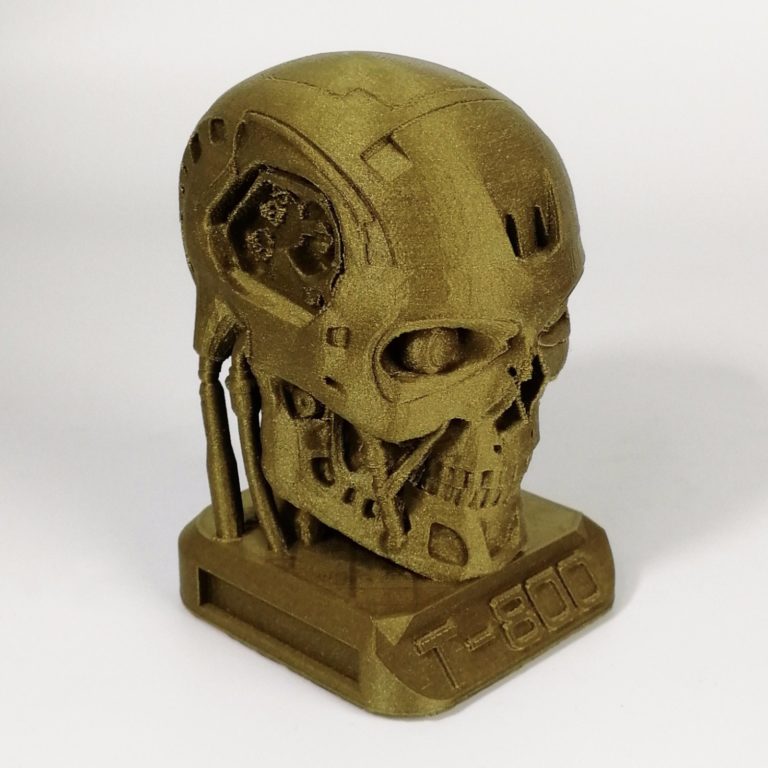 This method has several advantages over other production methods. The technology is used in the military and aerospace industries around the world. For example, the US Army uses cold spray to repair the mounts of a worn Bradley 25mm steel turret gun.
This method has several advantages over other production methods. The technology is used in the military and aerospace industries around the world. For example, the US Army uses cold spray to repair the mounts of a worn Bradley 25mm steel turret gun.
In the automotive industry, cold spray steel is used for crash repairs because the high strength steel substrates in cars can be susceptible to thermal repair methods such as welding.
Direct Energy Deposition (DED) and Wire Arc Additive Manufacturing (WAAM)
WAAM Steel Parts from MX3D (Source: MX3D) Direct Energy Deposition (DED) uses welding powder or wire that enters through a nozzle and is fed into the power source to melt the metal. A melt region is created and applied to the substrate. DED is a new process, reminiscent of an old building technology known as "cladding", in which a coating is applied to a substrate, often for thermal insulation or weather resistance. DED is useful for fabricating large objects as a whole, as well as complex geometries that require extensive machining. DED can get such parts much closer to finished than traditional CNC machining.
DED can get such parts much closer to finished than traditional CNC machining.
Because DED uses a coating process, it can be used to add complex geometries to existing steel parts, thus combining complexity with cost reduction. For example, the French company AddUp advertises a rocket nozzle that uses a preformed large 304 stainless steel hopper cone printed with an isogrid structure, usually made from a larger piece by traditional methods.
A technology related to DED is wire-arc additive manufacturing (WAAM). Instead of powder, WAAM uses a metal wire that is melted by an electric arc. The process is controlled by robotic arms. WAAM is also capable of producing large-sized metal parts, as demonstrated by the Dutch company MX3D and its nine thousand-pound 41-foot stainless steel bridge in Amsterdam, as well as an oil and gas equipment repair part, proving that parts can be made in the field.
Micro 3D printing
Micro parts printed from steel (Source: 3D MicroPrint) Micro scale additive manufacturing, or micro 3D printing, can produce products with a resolution of a few microns (or less). There are three micro 3D printing methods to produce metal parts.
There are three micro 3D printing methods to produce metal parts.
LMM (lithography-based metal fabrication) is a light-based technology that creates tiny parts from raw materials, including stainless steel, for applications such as surgical instruments and micro-mechanical parts.
Electrochemical deposition is the latest micrometal 3D printing process developed by the Swiss company Exaddon. In this process, the printing nozzle applies liquid with metal ions, creating details at the atomic level.
A third micrometal 3D printing method is microselective laser sintering, in which a layer of metal nanoparticle ink is applied to a substrate, then dried to produce a uniform layer of nanoparticles.
German researchers have successfully tested micro SLS printing of hollow microneedles using 316L stainless steel.
Metal parts from 3D Systems, Desktop Metal, MX3D and Materalise.first complete metal 3D printing system for office or design office
In October 2021, Raise3D announced the release of the MetalFuse metal 3D printing system as the best solution for small batch production of complex metal products. In February 2022, the Russian distributor of the company, Tsvetnoy Mir, brought the system to Russia and is ready to share detailed information about it.
In February 2022, the Russian distributor of the company, Tsvetnoy Mir, brought the system to Russia and is ready to share detailed information about it.
MetalFuse is a turnkey complex consisting of three pieces of equipment for 3D printing, cleaning and sintering of polymer-metal blanks into solid metal products.
From left to right, the components of the complex are shown:
- Forge 1 desktop 3D printer with metal-filled filament.
- D200-E Station for catalytic resin debinding.
- Oven S200-C for vacuum sintering blanks into all-metal products.
The first stage of fabrication on MetalFuse is the actual printing of the necessary part on the Forge 1 3D printer. The printer is quite easy to use and similar to other FDM/FFF 3D printers. However, it has significant differences. It has two extruders specially designed for metal-filled filament printing, an optimized hot end and extrusion system, automatic first layer control and accurate calibration. Forge 1 prints BASF Ultrafuse 316L and Ultrafuse 17-4 PH metal-filled filament with a diameter of 2.85 mm. The thread consists of particles of pure metal (steel) and a binder polymer.
Forge 1 prints BASF Ultrafuse 316L and Ultrafuse 17-4 PH metal-filled filament with a diameter of 2.85 mm. The thread consists of particles of pure metal (steel) and a binder polymer.
in the photo: 3D printer Forge 1
Characteristics of the 3D printer Forge 1:
Printer size: 620 × 626 × 760 mm
Field: 300 × 300 × 300 mm
Technology Technology Technology Technology Technology Technology Technologies press: FFF
Extruder: 2 extruders with electronic lifting system
XYZ positioning accuracy: 0.78125, 0.78125, 0.078125 microns
Print head speed: 30-150 mm/s
Max. platform heating temperature: 120 ºC
Supported materials: Ultrafuse 316L, Ultrafuse17-4 PH
Head diameter: 2.85 mm (Direct feed)
Max. extruder temperature: 300℃
Software: ideaMaker metal
Supported file types: STL, OBJ, 3MF, OLTP
OS: Windows/ macOS/ Linux
Pictured: printing process on Forge 1
Next device - station D200-E designed to remove the binder polymer .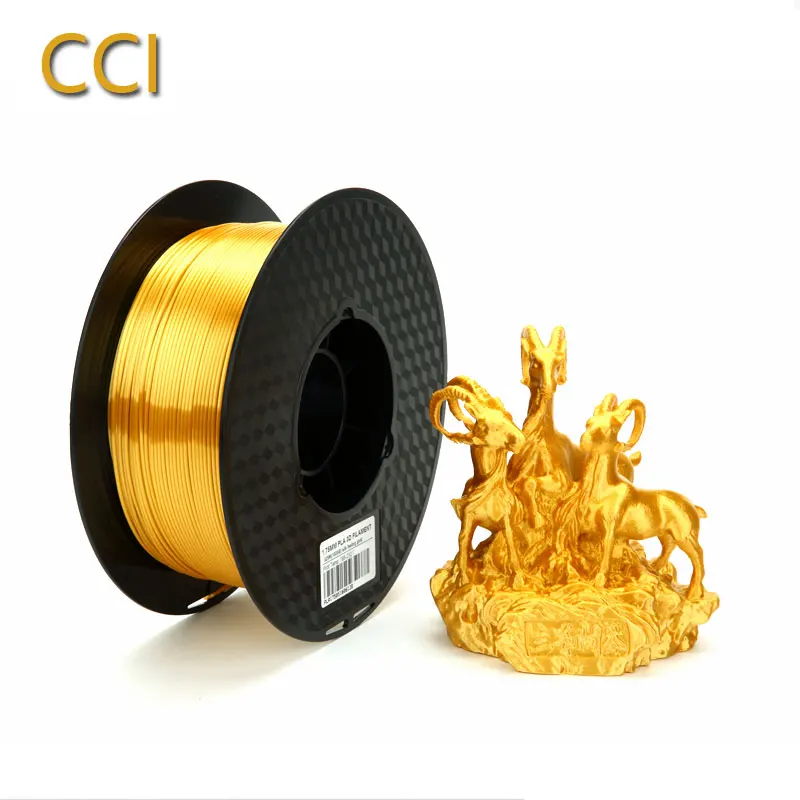 The D200-E uses a catalytic oxalic acid cleaning process. The process is safe and environmentally friendly. Cleaning with oxalic acid is easier than nitric acid treatment and faster than solvent and thermal treatment. It can even be used for titanium and copper.
The D200-E uses a catalytic oxalic acid cleaning process. The process is safe and environmentally friendly. Cleaning with oxalic acid is easier than nitric acid treatment and faster than solvent and thermal treatment. It can even be used for titanium and copper.
When comparing the catalytic cleaning method with the solvent extraction method, one can see the clear advantages of the first: the cleaning cycle takes much less time (4-12 hours versus 12-72), the layer height is not limited, the residual rate of the polymer is lower. The second method leads to swelling and cracking, while there are no such defects after catalytic purification.
The use of a catalyst can reduce time costs by 60% and at the same time obtain products with a density of up to 97% of the level of wrought iron, increasing strength by 52% compared to products obtained by removing the binder with solvents.
D200-E features:
Station size: 806×806×1545 mm
Working load area: 200×200×200 mm
Tray Type: Adjustable Tier Tray (6 Tier)
Type of shielding gas: argon or nitrogen
Maximum volume of catalyst in the storage tank: 2 liters
Maximum gas flow: 5 l/min
Maximum cleaning speed: 1. 55 mm/h
55 mm/h
Power: 220-230 VAC, 50Hz, single-phase, 16 A/3.5 kW
Exhaust gas treatment: activated carbon adsorption unit
In the photo: the process of installing the model in the D200-E
The third device of the complex - furnace S200-C for vacuum sintering of blanks into all-metal products .
In the photo: the process of loading products into the S200-C sintering oven
Features of the S200-C oven:
Oven size: 1304×1058×1950 mm
Working area: 200×200×200 mm
Sintering time: approx. 20 hours
Tray Type: Adjustable Tier Tray (6 Tier)
Type of shielding gas: argon or nitrogen
Maximum heat load: 12.5 kW
Maximum operating temperature: 1450℃
Power input: 380-400 VAC, 50Hz, three-phase, 40A/27kW
Pre-emergency stop: yes
Overheat protection: 1500℃
The S200-C oven from Raise3D uses vacuum sintering, does not require consumables, its cycle is 2 times shorter than other furnaces (10-24 hours compared to 17-31), it has a low gas consumption.
As already mentioned, Forge 1 prints with metal-filled plastic BASF Ultrafuse 316L and Ultrafuse 17-4 PH . These are innovative materials for the production of metal parts, developed by the largest German chemical concern BASF. The thread consists of 80-90% stainless steel and 10-20% polymer. The polymer contained in these materials acts as a link. Parts printed with Ultrafuse acquire their final properties, including hardness and strength, through a process of catalytic debinding and sintering.
The picture above shows what an Ultrafuse part looks like at each stage of production. After printing, it consists of metal and plastic and has a greenish tint. The model is still fragile and requires careful handling. Further, after cleaning from the polymer in D-200-E, it acquires a brown tint and consists of particles of pure metal and residual binder. Finally, after sintering at high temperatures, the secondary binder is removed, the metal particles are fused, and we get the part of the metallic color we are used to. The model reaches its final strength and hardness properties. Then it can be polished, processed in other familiar ways, or left as is.
The model reaches its final strength and hardness properties. Then it can be polished, processed in other familiar ways, or left as is.
In the photo: from left to right the product after printing on the printer, the product after cleaning and sintering, the product after polishing.
Pictured: models made with MetalFuse
The table below compares the properties of MIM and MetalFuse parts:
| Condition | MPIF 35-2016 (MIM), 9016L*0322 | Vickers hardness HV | ≤ 200 | 121 |
From the software for this system Raise3D introduced a new slicer - ideaMaker Metal . It has built-in templates for metal printing, it takes into account catalytic cleaning and sintering, supports mixed-type models (printing with multiple nozzles, with multiple templates, different layer thicknesses). ideaMaker is ultra-fast 64-bit and works with large models.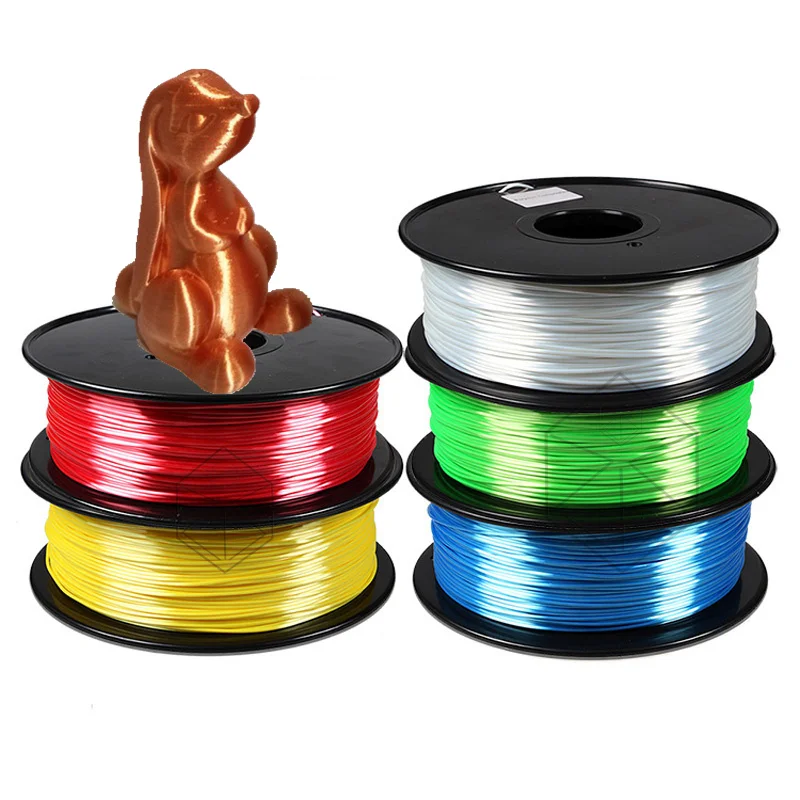 Also, owners of the Forge 1 printer can use the web platform RaiseCloud , with which you can remotely control the print command. It monitors and reports on all printing processes.
Also, owners of the Forge 1 printer can use the web platform RaiseCloud , with which you can remotely control the print command. It monitors and reports on all printing processes.
The whole complex is environmentally friendly. The equipment is equipped with filters that remove harmful substances and reduce environmental pollution.
Pictured: filters installed in MetlaFuse
MetalFuse enables easy, fast, safe, economical and environmentally friendly in-house production of high quality metal parts in small batches. Savings in comparison with printing by selective laser sintering is 1.4-2 times. The equipment is much cheaper than laser systems. According to the manufacturer, if you need to produce a small or medium batch of complex metal products, MetalFuse is the best solution on the market.
Detailed information about the MetalFuse system.
Our contacts: T: 8 (800) 550-02-09 | | www.cvetmir3d.ru
Our VKontakte group: https://vk.



